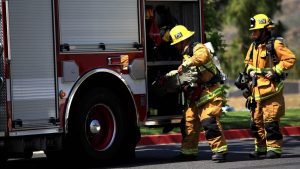Jim Noon, president of the , knows what heat stress feels like and how it is a slow-creep danger.
“I was working in an attic space,” he said, starting in the early morning but as the sun rose the heat intensified in the confined space.
“It was a slow increase in the temperature,” he recalls, and when he emerged he felt nauseous and unwell.
The creeping effect of prolonged heat exposure is the reason Noon maintains oversight is critical to ensuring those working in the soaring temperatures, which are becoming part of the new normal with climate change, are constantly monitored.
“You need someone supervising the workers,” he said.
Noon said (WSBC) has regulations and guidelines.
“But, I don’t think they go far enough,” he said, adding they make the employer responsible with the implementation measures. “You really have to make sure it goes back to someone overseeing the workers.”
Section 7 of the B.C. Occupational Health and Safety Regulation applies to individuals who may be exposed to thermal stress and uses the screening criteria for heat stress exposure set out in the science-based global ACGIH standard for unacclimatized workers.
The ACGIH standards are based upon the Web Bulb Globe Temperature (WBGT) index. WBGT accounts for all four major environmental heat factors: air temperature, humidity, radiant heat and air movement and puts in place guidelines for exposure based also on factors such as light or heavy work. The humidex is a second index used and is listed on the
Section 7 also sets out the employer obligation to engineer solutions to reduce heat exposure (including protective gear such as cooling vests), or when not applicable limit the employees’ exposure. It also states when there is danger of employees being exposed to severe temperatures water must be made available.
Despite the indexes, WSBC accepted 115 claims in 2021’s heat dome and a further 81 accepted claims in 2022. Those figures compare to WSBC’s 41 accepted from 2018 to 2020.
Planning is critical
Noon maintains pre-work site planning is essential as temperatures rise.
“When it gets over 35 degrees, for example, you really have to have a work plan for the day. Do you have water onsite? Is there shielding against direct sunlight (or can employees work on the shade side of the building),” he said.
The onsite site safety co-ordinator also must look at work in terms of the “other guy.”
“If you have some building scaffolding and guys working on siding and a bunch of workers below and all of sudden someone above blacks out from dehydration, the people below can be in danger,” Noon said.
Exposure can be impacted by age, fitness level and gender and there are no fast rules how long a person should work in extreme temperatures.
Lisa Flesher, president of the Vancouver-New Westminster and District Area Building and Construction Trades Council, said the lack of firm regulations is an issue her group which will be lobbying government over.
Her union also represents those involved in traffic controllers, the majority women, and they are often not able to seek shade relief.
They are also subject to radiant heat off the pavement. The federal government website on thermal stress warns that women have a lower rate of perspiring than men resulting in higher body temperatures.
Flesher, the business representative for , said her union in summer’s heat delivers sunscreen, neck coolers and electrolyte laden Gatorade to members onsites.
Self-assessment a judgment call
Robert Sheck, business manager for , said when he worked in the field during hot weather, members had to bring their own water when there was no infrastructure onsite to provide it. Some, but not all, general contractors did provide water.
Everyone has a responsibility for job safety, Sheck said, and jobsite tool box meetings can create more awareness of heat stress symptoms. But self-assessment is a judgment call.
“That can also raise some biases as some people don’t want to quit if they need the money,” he said.
Erin Linde, director of health and safety services for the BC Construction Safety Alliance, suggests workers buddy up in severe heat so they can check on each other for signs of heat stress, such as slurred speech.
Linde said most contractors will try to provide water during hot days.
“Most contractors will want to do the right thing,” she said, adding having workers book off because of illness only increases claims and impacts site productivity.
Kelly Scott, executive director of the , said his members have the ability to work during the cooler nights or are working in forested areas. While contractors have updated their heat-related guidelines, workers usually drive to the site and have the ability to use air-conditioning in vehicles to cool off, he said.











Recent Comments
comments for this post are closed